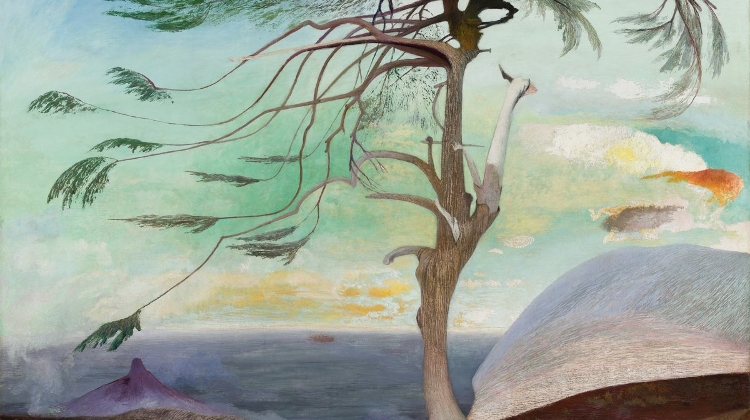Discover Csontváry, Revered Hungarian Painter of Solitude
- 12 Jul 2023 3:29 PM

My craving turned into obstinate determination when my first attempt to cross the Syrian-Lebanese border fell through since it was closed due to some sectarian skirmishes instigated by the Hezbollah.
A year later I finally made it to the cedar grove where presumably Csontváry painted his cedar canvases in 1907 (at least according to the plaque placed by the Hungarian Embassy in Lebanon).
Having caught sight of the cedars my high expectations were abruptly crushed. They were just trees, ordinary trees whose beauty equals the common acacia on the Hungarian Plain.
Only after reading Csontváry’s 20-page autobiography, a most enjoyable read studied extensively by psychopathologists, did I realise where I went wrong: I lacked the divine vision he possessed.
Tivadar Csontváry Kosztka (originally Mihály Tivadar Kosztka), born in Kisszeben (now Sabinov, Slovakia) was a Hungarian painter. He died in 1919 at the age of 72, and during his life there were sixteen years when he painted more than a hundred canvases.
Contrary to most artists, painting for him was a divine mission for which he prepared for 14 years by opening a pharmacy and collecting enough capital to devote his life to fulfilling the mission to which he was ordained by some supernatural power.
It all started on 13 October 1880, on a warm “Indian summer”' day when sitting outside his pharmacy at Gács (now Haličský zámok in Slovakia) to take a rest, God spoke to him.
Except for one word the call he heard was in Hungarian and the voice said: "You will be the greatest …(?).. painter in the world, greater than Raphael."
Taking this call absolutely seriously he rushed to Rome the next year to find out why Raphael? Having studied the paintings of the Renaissance genius in the galleries of the Vatican he was relieved to learn why his destiny was to supersede Raphael’s art.
He concluded briefly that Raphael’s paintings simply lacked the divine spirit and did not reflect vital nature. This visit might have given him the clue to his call’s missing word, namely “sun path” (napút), a concept he became obsessed with. The divine spirit shows itself in the path of light radiating from the sun, so he interpreted the message.
After leaving his pharmacy behind at the age 41 he set off to Munich to begin his painting career, or rather it should be said “fulfilling his mission.” It took him more than a decade of several trips to the Middle East (including Egypt, Palestine, Syria) in search of the Great Motif to unfold the secret of the sun path.
He found it in Cairo in 1904 (The Cairo Railway Station at Sunset Lit by Electricity) and it was the light still present when the sun is no longer seen , that is before sunrise and after sunset.
This discovery became the credo of his “plein-air” art and that’s how he became one of the greatest artists of colour and light, culminating in his magnificent canvas Baalbeck painted in 1906. Only four years and the cedar paintings later he concluded that he had fulfilled his divine mission in this world, and stopped painting.
Like his cedar in faraway Lebanon, he himself became a solitary figure of Pest bohemian life and for the rest of his life was widely mocked for his eccentric political views and vega diet. His psychosis took him over very intensively and he died in obscurity in Buda‘s János Hospital leaving his unappreciated canvases in his deserted flat.
It’s a mere coincidence of events that we know about him at all and can see most of his works at the museum in Pécs named after him.
A few days after his death his relatives were planning to auction off his canvases to carters to protect their carts when Gedeon Gerlóczy, a young architect with a keen eye for art, decided to invest all his money in purchasing the canvases at the last moment, thus saving most of the “mad artist’s” works for posterity.
Ten years passed before Csontváry had an exhibition and thirty more before finally he won recognition in Hungary in the midst of controversial critical appraisal. His prophecy that appreciation can only come when you have survived all your contemporaries could not have been truer in his case.
Should you have the opportunity to look at his paintings, take your time and look for the lights and shades of colours - even if there is little chance you can afford to do what Picasso did in 1948 when he visited an ad hoc Csontváry exhibition at the Hungarian Embassy in Paris, and asked his hosts to leave him locked in the room for an hour on his own, after which he simply said: “I never realized that apart from me our century had a great artist.”
Source: fungarian.com



























LATEST NEWS IN shopping